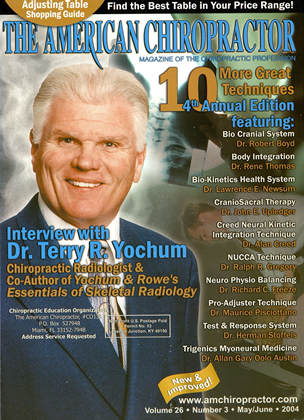T YI'i; II DIABETES REPRESENTS A SIGNIFICANT HEALTH RISK. Individuals with diabetes are at greater risk for developing cardiovascular disease and other chronic diseases. Insulin resistance represents part of the prc-diabetic state and it is thought that some 40 million Americans have insulin resistance, which means that numerous individuals are at risk for developing diabetes. Isomma states, "The insulin resistance syndrome constitutes a major challenge for public health professionals in the field of preventive medicine since more than 40 million U.S. adults seem to be affected by the syndrome. Lifestyle changes could have a profound influence on the syndrome and its development."1 Inflammation is a potent driver of insulin resistance. Recent research has demonstrated that tumor necrosis factor (TNF), a potent pro-inflammatory cytokine, can block the insulin receptor and cause hyperinsulinemia and insulin resistance.2 TNF is classically viewed as a mediator released by white cells; how- ever, it is known that adipose tissue can also produce TNF and this production is significant in overweight individuals. So, losing body fat is an excellent way to reduce TNF production. TNF is also known to be a potent nociceptor irritant and driver of inflammation. Research indicates that we can reduce TNF with omega-3 fatty acids, so supplementing with fish oil and flaxseed oil is an excellent choice.1 The health-compromising effects of insulin resistance ** should not be underestimated. A study was initiated to evaluate the hypothesis that insulin resistance would predict the development of chronic degenerative diseases, including hypertension, heart disease, stroke, cancer, and type II diabetes.4 The researchers selected apparently healthy individuals for this prospective study that involved 4-to-l 1 years of observation. The most striking finding was that none of the chronic diseases developed in the third of the subjects that were most insulin-sensitive. The authors stated this finding is "truly remarkable," which is a comment that is not customarily used by researchers. As mentioned earlier, heart disease is a serious condition that is driven by diabetes. Most people are now aware that the LDL cholesterol fraction is considered to be a potent athero-genic factor. In particular, the problem really develops fully when LDL particles become oxidized. Free radicals are responsible for the oxidation of various cellular structures, which results in cell damage, dysfunction, and cellular death. Research- ers set out to see if supplementation with beta-carotene (24 mg/ day) and vitamins C (1000 mg/d) and E (800 IU/d) would prevent LDL oxidation in diabetic patients. The study lasted 12 weeks, and the results indicate that supplementation with anti-oxidants significantly reduces LDL oxidation. Making dietary changes can be exceedingly difficult for many patients. But most are willing to begin by making some minor changes. Cutting sugar and flour intake by 50% is a good place to start. Replacing these calories with fruits and vegetables is easy to do. Also, having such patients take a multivitamin, an extra antioxidant, 500 mg of magnesium and 1 gram of EPA/ DHA is also very doable. A chiropractor recently contacted me who is suffering from type II diabetes and being urged by his medial doctor to take medication. He desperately wants to avoid the meds, so he became more devoted to an antiintlammatory diet and supplementation. Within 6 weeks, this chiro was able to drop 8 pounds and reduce his morning blood sugar from 180 to 120. He has much more energy and feels considerably better. Helping colleagues and patients with potentially serious conditions can be very rewarding. As most medications ultimately have undesirable side-effects, making lifestyle modifications is a far safer choice...regular exercise, chiropractic adjustments, and nutritional adjustments are in great need. We chiropractors are in a great position to offer such lifestyle changes, and such posi- tive changes can directly impact the tissues we address. Research has shown that diabetes patients have altered proteoglycan metabolism in their intervertebral discs, which may promote a weakening of annular fibers and disc prolapse.6 Indeed, the tissues with which we DCs are most intimately associated are at risk for injury in diabetic patients. Making appropriate nutritional recommendations to prevent diabetes should also be viewed as a recommendation to protect the spine and reduce subluxations. EZS ► See pg 59 for References Dr. Seaman is the Clinical Chiropractic Consultant for Anabolic Laboratories, one of the first supplement manufacturers to service the chiropractic profession. He is on the faculty of Palmer College of Chiropractic Florida and on the postgraduate faculties of several other chiropractic colleges, providing nutrition seminars that focus on the needs of the chiropractic patient. Dr. Seaman believes that chiropractors should he thinking like chiropractors, while providing nutritional recommendations. Doctors and patients who follow his programs report improved feelings of well-being, weight loss, dramatic increases in energy, and significant pain reduction. Dr. Seaman can he reached by e-mail at docidlesspainbetlergolfcoDi. Lifestyle changes could have a profound influence on the syndrome and its development. Most are willing to begin by making some minor changes, such as: r^ 1) Cutting sugar and flour intake by 50% is a good place to start. 2) Replacing these calories with fruits and vegetables is easy to do. 3) Also, having such patients take a multivitamin, an extra antioxidant, 500 mg of magnesium and 1 gram of EPA/DHA is also very doable.
 View Full Issue
View Full Issue






